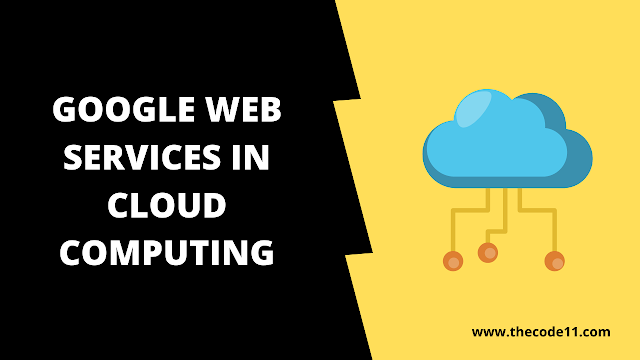In this tutorial you are going to learn about Google Web Services in Cloud Computing.
Web Services
Web services is a collection of open protocols and standards used for exchanging data between applications or systems. It is a technology to communicate one programming language with another. The web services can be searched for users on the internet and can also be invoked.
Google App Engine
Google App Engine is the very easiest and simplest way to deploy the applications and also to scale the computer applications.
- Provides end to end application management
- Supports Go, Java, .net, Node.js, Python
- Use custom run time and write code in any language
- Google App Engine can connect to different types of storage providers of google cloud storage products (Cloud SQL, etc.)
- No usage charges: Pay for resources
- Google app engine is provisioned
Features:
- Automatic load balancing
- Auto-scaling
- Managed platform updates and application health monitoring
- Application versioning
- Traffic splitting
- App Engine provides Platform as a service
- Server less
- Lesser responsibility compared to compute engine
- Lower flexibility when compared to compute engine
App Engine Environments
Standard:
- Application runs in language specific sandboxes
- Complete isolation from OS/Disk/other Apps
V1: java, Python, Ruby, PHP
- Only for python and PHP runtime
- Restricted network runtime
- Extension such as White listed extensions are only allowed
- Only the libraries are allowed
No restriction for Java and Go run times
Flexibility
- Makes use of compute engine virtual machines
- Support any runtime environment
- It is flexible with many built-in support for programming languages like python, Java, Node.js Go.
- App engine provides direct access to many background processes and also to local disks
App Engine: Application component Hierarchy
Application: One App per project
Services: Multiple microservices
App components
- Multiple services provided within single applications
- Each service can have different settings
- Earlier called as Modules
Versions: Each version associated with code and configuration
- Multiple versions can co-exist
- Options to rollback and split traffic
Google Web Toolkit
Google web toolkit is a toolkit for developing web applications for end users. Using GWT, users can write JAVA code which gets compiled to JavaScript.
- Specific JavaScript is used for each browser.
- Can utilize JavaScript directly including via libraries.
- Can use J unit testing
- Robust Eclipse plugin, including debugging
- Integrated jetty development server
- Bookmark application state
- Phone Gap/ Cord ova compatible
- Can easily deploy to Google App Engine Code UI or Use XML
Implementing a GWT(Google Web Toolkit) Module:
- Design/ Selecting widgets
- Implementing View behaviour
- Adding Style
- Communicating to the controller (GWT RPC)
- Internationalization
Disadvantages of Google Web Toolkit:
- Initial compile is low
- Awkward time zone support
- Limited libraries and API for client code
- Broken stock watcher tutorial
Compute Engine
Compute engine is a customized virtual machine running on google cloud. Google compute engine is a scalable, acts as an Infrastructure as a service for running virtual machine on the Google Cloud Platform
Features of compute engine:
- Load balancing
- Global scoped wages
- Integrated networking
- Linux based operating systems
- LNC migration
This article on Google Web Services in Cloud Computing is contributed by Hemalatha P. If you like TheCode11 and would like to contribute, you can also write your article to us. Here is our mail id - thecode11info@gmail.com

